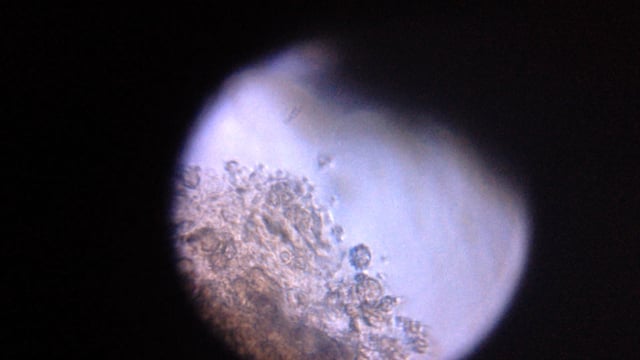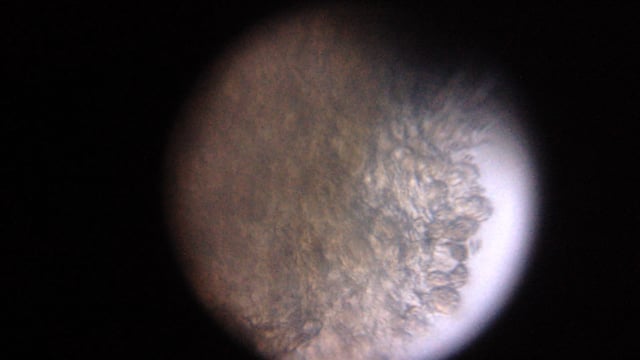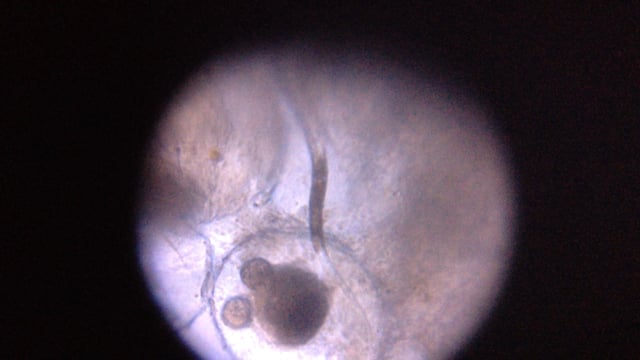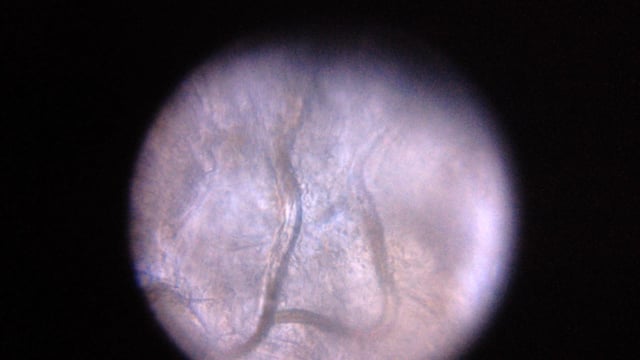Rot in Action
 Jan 07, 2016 • 8:42 PM UTC
Jan 07, 2016 • 8:42 PM UTC Unknown Location
Unknown Location 140x Magnification
140x Magnification Microorganisms
Microorganisms
Matthew Rossi
I'm a novelist, essayist, and a writing consultant. I work in the writing centers at Columbia and Baruch University and explore research into the overlap of maker cultures and writing. My work with the Foldscope tends to focus on finding wild creatures in urban spaces and looking at how human works are shaped by the movements of the biosphere.
40posts
105comments
4locations

As things progress in the marine habitat, as creatures settle in and pass on, I’m starting to turn my attention away from the free floating citizens of the jar and toward the benthic residents on the ground (though I suspect all of my residents are technically benthic, since they come from a tidal pool).
As creatures die, the natural course of things, is, of course, that they rot. At a distance, rot seems like a terribly passive process. The slow decay of a vegetable left out too long, perhaps. But, of course, it’s tremendously active when viewed up close. I realized this recently when a floating bit of dross from the surface of the water revealed itself to be as active and crawling with creatures as a watering hole.
As creatures die, the natural course of things, is, of course, that they rot. At a distance, rot seems like a terribly passive process. The slow decay of a vegetable left out too long, perhaps. But, of course, it’s tremendously active when viewed up close. I realized this recently when a floating bit of dross from the surface of the water revealed itself to be as active and crawling with creatures as a watering hole.
Viewed in high magnification, you can see the whole surface seems to move, it is so densely packed with creatures.


In the other jar, while I wait for the nudibranchs to grow, I wanted to see what has become of their egg cases, now that they are hatched. The protein base that makes up the gel of the casing would surely be a rich source of food for other creatures. Sure enough, a look at the eggs reveals a population of marine worms devouring the used up eggs. In this video, you can see them working their way through the individual eggs. I get a clear look at one of the undeveloped eggs, at the worm’s body.


The sheer number of worms in the tank is actually a bit alarming. There seems to have been a population boom of a sort I wasn’t expecting, and that I hope doesn’t a) kill the prospect of baby nudibranchs living in the tank and b) doesn’t indicate a severe imbalance in the tank. My stance is, as it has always been, that I will allow the system to continue as it wants without my intervention. For now, that means some populations will flourish, others will not. And always there will be agents of rot.
Sign in to commentNobody has commented yet... Share your thoughts with the author and start the discussion!

 0 Applause
0 Applause 0 Comments
0 Comments















